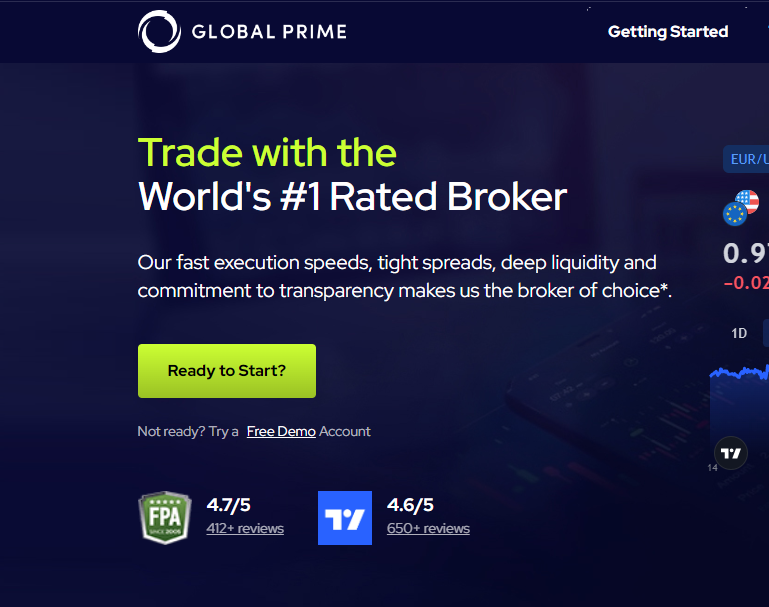Mastering Trading Terminology: 60 Commonly Used Terms for Serious Traders and Investors in the Financial Markets…
Understanding the language of the markets is crucial. Whether you’re a beginner trader or a seasoned investor, having a firm grasp of trading terminology is essential for making informed decisions and navigating the financial landscape with confidence.
In this post, we will highlight:
- 15 fundamental terms,
- 11 technical terms,
- 9 risk management terms,
- 11 common trading strategies and terms, and
- 14 additional trading terms.
Fundamental Trading Terms for Traders, Investors, Shareholders and Company Executives
1. Bull Market: A bull market refers to a period in the financial market where prices of assets, such as stocks, are rising. It signifies optimism, investor confidence, and an overall upward trend.
2. Bear Market: In contrast to a bull market, a bear market signifies a period of declining prices and pessimism in the financial market. It is characterized by a sustained downward trend, often accompanied by investor fear and selling pressure.
3. Long Position: Taking a long position means buying an asset with the expectation that its value will increase over time. Traders or investors who hold long positions aim to profit from rising prices.
4. Short Position: A short position involves selling an asset that the trader or investor does not currently own, with the expectation that its price will decline. Short sellers aim to profit from falling prices by buying back the asset at a lower price.
5. Volatility: Volatility refers to the degree of price fluctuation or variation in the market. High volatility indicates larger price swings, while low volatility suggests more stable and less dramatic price movements.
6. Liquidity: Liquidity refers to the ease with which an asset can be bought or sold without causing significant price changes. Highly liquid assets have a large number of buyers and sellers, making it easy to enter or exit positions.
7. Market Order: A market order is an instruction to buy or sell an asset at the current market price. It prioritizes speed of execution over price, ensuring the immediate fulfilment of the order.
8. Limit Order: A limit order allows traders or investors to set a specific price at which they are willing to buy or sell an asset. It guarantees the desired price but does not guarantee immediate execution, as it will only be filled when the market reaches the specified price.
9. Stop Order: A stop order, also known as a stop-loss order, is designed to limit potential losses by automatically triggering a market order to buy or sell an asset when it reaches a predetermined price level.
10. Ask Price: The ask price, also known as the offer price, represents the price at which sellers are willing to sell an asset. It is the price at which you can buy the asset from them.
11. Bid Price: The bid price represents the price at which buyers are willing to purchase an asset. It is the price at which you can sell the asset to them.
12. Spread: The spread is the difference between the bid price and the ask price of an asset. It reflects the transaction cost and liquidity of the asset, with narrower spreads indicating higher liquidity.
13. Volume: Volume refers to the total number of shares or contracts traded in a particular asset within a given timeframe. It provides insights into the level of market activity and liquidity.
14. Market Cap: Market capitalization, or market cap, is the total value of a company’s outstanding shares of stock. It is calculated by multiplying the current market price per share by the total number of shares outstanding.
15. Dividend: A dividend is a distribution of a portion of a company’s earnings to its shareholders. It is usually paid in cash or additional shares and serves as a reward to investors for holding the company’s stock.
Technical Trading Terms for Traders, Investors, Shareholders and Company Executives
16. Support Level: A support level in technical trading refers to a price level at which a particular asset has historically found buying interest and tends to “support” or prevent further price decline. It is often seen as a floor beneath the asset’s price.
17. Resistance Level: A resistance level is the opposite of a support level. It represents a price level at which an asset has historically encountered selling pressure, preventing further price increases. It is seen as a ceiling above the asset’s price.
18. Breakout: A breakout occurs when an asset’s price moves above a significant resistance level or below a notable support level. It suggests a potential shift in market sentiment and may lead to a sustained price movement in the breakout direction.
19. Trend: A trend refers to the general direction in which an asset’s price is moving over a given period. It can be classified as an uptrend (rising prices), a downtrend (falling prices), or a sideways trend (range-bound prices).
20. Candlestick: Candlestick charts display an asset’s price movement within a specified timeframe. Each candlestick represents the opening, closing, high, and low prices of that period. Candlestick patterns are used to analyze market sentiment and predict future price movements.
21. Gap: A gap occurs when there is a significant difference between the closing price of one trading session and the opening price of the next session. Gaps can indicate strong market sentiment and potential price continuation or reversal.
Technical Trading Indicator Terms for Traders and Investors
22. Moving Average: A moving average is a widely used technical indicator that smooths out price fluctuations by calculating the average price over a specified period. It helps identify trends, support, and resistance levels, and potential entry or exit points.
23. Relative Strength Index (RSI): The Relative Strength Index is a momentum oscillator that measures the speed and change of an asset’s price movements. It provides insight into whether an asset is overbought or oversold, indicating potential reversal points.
24. Fibonacci Retracement: Fibonacci retracement is a technical analysis tool that uses horizontal lines to identify potential support and resistance levels based on key Fibonacci ratios. It helps traders anticipate price reversals or levels of potential price continuation.
25. Bollinger Bands: Bollinger Bands are volatility indicators that consist of three lines plotted on a price chart. The bands represent a measure of price volatility and are typically used to identify overbought or oversold conditions and potential price breakouts.
26. MACD (Moving Average Convergence Divergence): MACD is a popular trend-following momentum indicator. It consists of two moving averages that oscillate above and below a zero line. Traders use MACD to identify potential buy or sell signals based on the convergence or divergence of the moving averages.
Risk Management Terms for Traders and Investors in the Financial Markets
27. Risk Management: A comprehensive approach to identify, assess, and reduce risks in trading or investing. It involves implementing strategies and techniques, such as setting stop-loss levels, diversifying portfolios, and maintaining appropriate position sizing, to minimize potential losses and protect capital.
28. Stop-Loss Order: A stop-loss order is a risk management tool used by traders to automatically sell an asset if its price reaches a predetermined level. It helps limit potential losses by exiting a trade when the price moves against the trader’s position.
29. Take-Profit Order: A take-profit order is an instruction given by a trader to automatically close a position and secure profits when the price reaches a predetermined level. It allows traders to lock in gains and avoid potential reversals that could erode profits.
30. Risk-Reward Ratio: The risk-reward ratio is a calculation that compares the potential profit of a trade to the potential loss. It helps traders assess whether a trade is worth taking by evaluating the potential reward with the risk involved.
31. Margin Call: A margin call occurs when a broker demands additional funds from a trader to maintain the required margin level for open positions. It is triggered when the account’s equity falls below a certain threshold, often due to losses, and serves to protect the broker from potential losses.
32. Volatility Index (VIX): The Volatility Index, often referred to as the VIX, is a measure of market volatility and investor sentiment. It is commonly used as a gauge of market risk, with higher VIX values indicating increased volatility and potential market instability.
33. Drawdown: Drawdown represents the peak-to-trough decline in the value of an investment or trading account during a specific period. It measures the extent of losses incurred before a recovery in value occurs.
34. Diversification: Diversification is a risk management strategy that involves spreading investments across different assets, sectors, or markets. By diversifying, investors aim to reduce the impact of potential losses from any single investment and increase the likelihood of overall portfolio stability.
35. Position Sizing: Position sizing refers to determining the appropriate amount of capital to allocate to a specific trade or investment. It involves considering factors such as risk tolerance, account size, and the potential risk of the trade to establish an appropriate position size.
Common Trading Strategies and Terms Every Serious Trader/Investor Should Know
36. Day Trading: Day trading is a trading strategy where traders buy and sell financial instruments within the same trading day, aiming to take advantage of short-term price fluctuations. Positions are typically closed before the market closes to avoid overnight risks.
37. Swing Trading: Swing trading is a strategy that seeks to capture shorter-term price movements within a broader trend. Traders hold positions for a few days to several weeks, aiming to profit from price swings or “swings” between support and resistance levels.
38. Position Trading: Position trading is a type of trading where traders hold an asset for a longer period, ranging from weeks to months or even years.
The aim is to earn profits from long-term price trends. It requires less attention than day trading and swing trading, making it a more relaxed strategy.
39. Trend Trading: Trend trading involves identifying and following the direction of a prevailing market trend. Traders aim to enter positions in line with the trend and stay in them until signs of trend reversal appear, aiming to profit from sustained price movements.
40. Scalping: Scalping is a high-speed trading strategy focused on making small profits from frequent trades. Scalpers aim to exploit short-term price inefficiencies, often holding positions for just seconds or minutes, relying on high trading volume and tight bid-ask spreads.
41. Momentum Trading: Momentum trading is a strategy that capitalizes on the continuation of existing price trends. Traders seek assets with strong price momentum, expecting the trend to persist and riding the wave to generate profits. Positions are typically closed when momentum starts to wane.
42. Value Investing: Value investing is a long-term strategy focused on identifying undervalued assets that have the potential to appreciate in value over time. Investors analyze fundamental factors, such as earnings and assets, aiming to buy assets below their intrinsic value.
43. Growth Investing: Growth investing involves seeking out stocks or other assets that have the potential for significant future growth. Investors focus on companies with above-average growth rates, even if they may have higher valuations, in the expectation of future capital appreciation.
44. Dividend Investing: Dividend investing focuses on selecting assets, particularly stocks, that provide regular dividend payments. Investors seek companies with a history of consistent dividend payouts and aim to generate income from these dividends along with potential capital gains.
45. Dollar-Cost Averaging: Dollar-cost averaging is an investment strategy where an investor regularly invests a fixed amount of money into an asset at regular intervals, regardless of its price. This approach reduces the impact of market volatility by buying more units when prices are low and fewer units when prices are high.
46. Buy and Hold: Buy and hold is a long-term investment strategy where investors purchase assets and hold them for an extended period, often years or even decades. The strategy is based on the belief that over time, the value of the assets will increase, generating profits.
Additional Trading Terms for Traders and Investors in the Financial Markets
47. Pips: Pips are the smallest incremental unit of measurement in currency trading. They represent the fourth decimal place in most currency pairs and indicate the price movement of a currency pair.
48. Swap: Swap, also known as rollover, refers to the interest rate differential between two currencies in a forex trade. It is the cost or income associated with holding a position overnight and can be either positive or negative depending on the interest rate differential.
49. Commission: Commission is a fee charged by brokers for executing trades on behalf of traders. It is typically a percentage of the trade’s value or a fixed amount per transaction.
50. Scalping: Scalping is a trading technique where traders aim to make quick profits from small price changes. Scalpers enter and exit trades rapidly, often within seconds or minutes, aiming to capture small price differentials.
51. Types Of Limit Orders: Limit orders are instructions to buy or sell an asset at a specified price or better. Buy-limit orders are placed below the current market price, while sell-limit orders are placed above it. Buy-stop-limit orders and sell-stop-limit orders combine stop orders with limit orders to trigger a trade at a specified price or better.
52. Types Of Stop-orders: Stop orders are instructions to automatically buy or sell an asset when it reaches a certain price. Buy-stop Orders are placed above the current market price to trigger a buy order, while sell-stop orders are placed below the current price to trigger a sell order.
53. Base Currency: In a currency pair, the base currency is the first currency listed. It represents the unit of measurement for the exchange rate and determines the value of the counter currency.
54. Counter Currency: The counter currency, also known as the quote currency, is the second currency listed in a currency pair. It is the currency in which the exchange rate is quoted, and its value is determined relative to the base currency.
55. Broker: A broker is a financial intermediary or firm that facilitates the buying and selling of financial assets on behalf of traders or investors. They provide access to markets, execute trades, and often offer additional services and tools for trading.
56. Quote: A quote refers to the current bid and ask prices of a financial asset. The bid price represents the highest price a buyer is willing to pay, while the ask price represents the lowest price a seller is willing to accept.
57. Exchange: An exchange is a marketplace where buyers and sellers come together to trade financial assets. It provides a regulated platform for executing trades and ensures fair and transparent price discovery.
58. Liquidation: Liquidation refers to the process of closing out a position or selling off assets to convert them into cash. It is often done to minimize losses or meet margin requirements in leveraged trading.
59. Margin: Margin is the collateral or initial deposit required by a broker to enter into leveraged positions. It allows traders to control larger positions with a smaller amount of capital, but it also amplifies both profits and losses.
60. Leverage: Leverage is the use of borrowed funds, typically provided by a broker, to amplify the potential returns of an investment or trade. It allows traders to control larger positions with a smaller amount of capital. However, it also increases the risk, as losses can exceed the initial investment.
The Bottom Line
Being familiar with trading terms is essential for traders and investors looking to trade in the financial markets. Aside from increasing your knowledge as a trader, it’ll go a long way to helping you make brilliant decisions.
Recommended for Next Read







